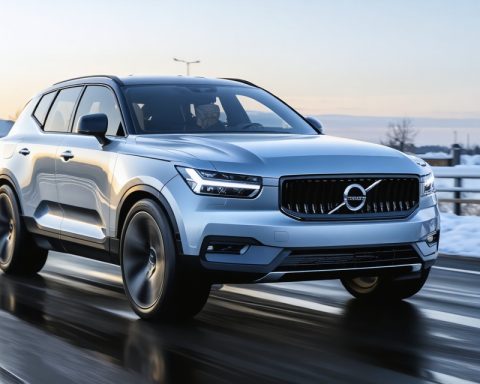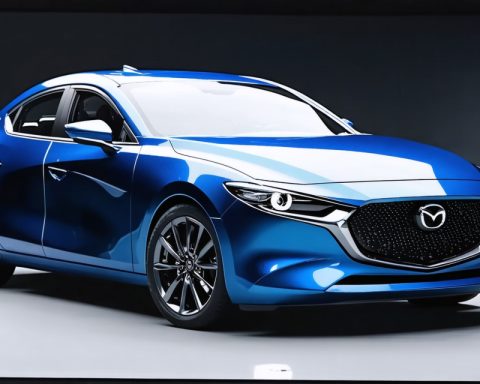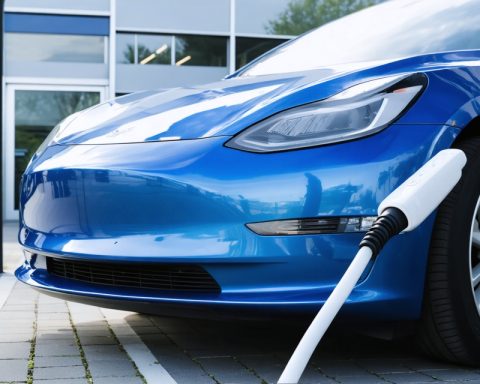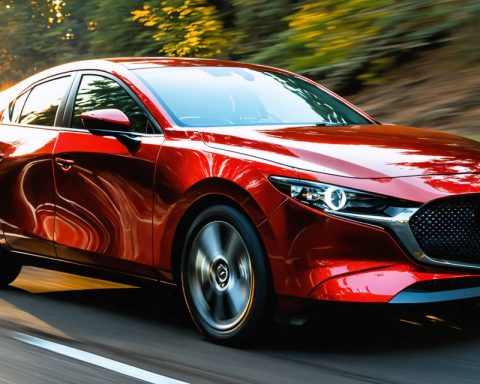- BYD Auto is expanding into the UK with a new base at the ARC campus in Denham, aiming to challenge Tesla’s dominance.
- BYD’s UK headquarters will support electric mobility in Europe, leveraging its success with electric double-decker buses in London.
- BYD’s revenue has surged by 29%, surpassing Tesla in global market influence.
- Analysts cite Tesla’s declining European and US sales due to limited product innovation and CEO Elon Musk’s political controversies.
- BYD introduced a groundbreaking charging system, offering 250 miles of charge in five minutes, overshadowing Tesla’s Supercharger technology.
- Despite trade barriers in America, BYD’s competitive pricing and innovation drive its rapid growth in Europe.
- BYD’s affordable models are significantly impacting the market, posing a threat to Tesla’s pricing strategy.
- Investors are reconsidering Tesla’s position as BYD gains momentum, marking a significant shift in the electric vehicle landscape.
A monumental moment unfolds in the global electric vehicle arena as BYD Auto, a trailblazer from China, plots its strategic move into the heart of the UK. Nestled within an innovative ARC campus in Denham, Buckinghamshire, BYD is poised to reshape the landscape by fiercely challenging Tesla’s reign. As the whir of construction echoes through the green spaces of Building 05, the world holds its breath, anticipating the ripples this venture will send through the industry.
The UK base represents more than geographic expansion for BYD; it signals an intent to weave itself into the fabric of European electric mobility. Already gaining admiration for its ingenious electric double-decker buses gracing the streets of London, BYD is not just participating—it’s leading the charge towards a greener tomorrow. This headquarters aims to form a nucleus for emission-free public transport dreams, aligning with the crescendoing call for sustainable futures.
This bold step coincides with a 29% surge in BYD’s revenue, catapulting the company past Tesla in the race for global dominance—a shift as significant as the rumbling of thunder heralding a storm. As analysts dissect Tesla’s faltering grip on the market, unable to match its once formidable sales momentum in Europe and the US, they attribute this decline to both stagnant product innovation and the increasing appeal of competitors like BYD.
The downturn for Tesla has been enmeshed in broader narratives, with CEO Elon Musk’s political entanglements casting long shadows. Once the green choice darling, Tesla’s brand faces the turbulence of transforming public perception, leaving space for its rivals to advance. Amid plummeting resale values, a peculiar paradox emerges: electric car fascination rises, but Tesla’s allure dims.
BYD stands out, brandishing its technological prowess. A recent unveiling of a revolutionary charging system commands attention. Capable of offering 250 miles of charge in a fleeting five minutes, this trailblazing technology dwarfs existing Tesla Supercharger expectations. The dizzying promise of 1,000-kilowatt speeds captures imaginations, drawing a sharp line of distinction in a competitive field.
Yet, BYD’s path isn’t free from obstacles. It seeks to carve its identity beyond China’s borders, gaining traction in the European market with explosive growth, but struggling under the weight of tariffs and trade barriers as it eyes the American market. However, a calculated strategy of competitive pricing and persistent innovation may eventually erode these barriers, turning disadvantages into stepping stones.
Despite the hurdles, BYD’s momentum is indisputable. Ubiquitous and affordable, BYD’s entry-level vehicles present an enticing value proposition, challenging Tesla’s market allure and pricing with models like the Qin L EV—an offering that matches the Model 3’s specifications but demands only half the price. This dynamic pricing strategy could potentially reshape consumer landscapes, lending credence to suggestions of an impending paradigm shift.
For Tesla, the time to recalibrate is dwindling. Investors, watching with bated breath as BYD outpaces them in financial returns, ponder Musk’s earlier dismissals of BYD’s capabilities and recalibrate their assessments. Tesla’s stock dances precariously, subject to market whims, as it attempts to recover lost glory amid a rapid 40% devaluation since December.
In this theater of innovation, BYD’s foray into the UK symbolizes more than a business expansion. It represents a thunderous declaration in the electric vehicle revolution, a challenge to Tesla’s long-standing supremacy. As these titans clash on the global stage, the competition will inevitably sharpen, pushing each to innovate, adapt, and possibly—reinvent what electric vehicles mean for the future.
BYD vs. Tesla: The Electrifying Battle for EV Supremacy
Expanding Horizons: BYD’s Strategic UK Inroad
As BYD Auto establishes its new base at the ARC campus in Denham, UK, this move signifies more than a geographical expansion—it marks a strategic pivot in the burgeoning electric vehicle market. Let’s delve deeper into this landmark event and explore its broader implications.
Real-World Use Cases and Industry Trends
BYD’s Proven Success in Public Transport:
BYD has already made significant strides in public transportation with its electric double-decker buses in London, enhancing emission-free travel and reducing urban carbon footprints. This success in public transport can serve as a model for other cities across Europe, reinforcing BYD’s reputation as a leader in sustainable mobility.
Global EV Market Dynamics:
According to the International Energy Agency (IEA), global EV sales are projected to reach 230 million units by 2030. BYD’s strengthening presence in Europe positions it well to capture a substantial share of this market, leveraging the continent’s push towards green energy solutions.
Key Features and Technological Innovations
Revolutionary Charging Capabilities:
BYD’s new 1,000-kilowatt charging system, which provides 250 miles of charge in just five minutes, sets a new benchmark in rapid-charging technology. This advancement dwarfs Tesla’s Supercharger network, creating a competitive edge for BYD in the EV market.
Affordable Pricing Strategy:
BYD’s pricing strategy features models like the Qin L EV, offering similar specifications to Tesla’s Model 3 at half the price. This affordability could redefine consumer expectations and drive broader adoption of electric vehicles.
Challenges and Market Forecasts
Navigating Tariffs and Trade Barriers:
While BYD has experienced explosive growth in Europe, entering the US market remains a challenge due to existing tariffs and trade policies. However, as political landscapes evolve, there may be new opportunities for entry.
Tesla’s Market Response Required:
Tesla must innovate and adapt its offerings to counter BYD’s momentum. Investors currently observing BYD’s rise might pressure Tesla to accelerate its innovation cycle and price competitiveness.
Pros and Cons Overview
Pros of BYD’s UK Expansion:
– Technological Leadership: Advanced charging technology.
– Competitive Pricing: Enhanced affordability could disrupt the market.
– Established Public Transport Success: Proven deployment in London’s transit system.
Cons:
– Trade Barriers: Challenges in entering the US market.
– Brand Recognition: Building brand recognition outside China.
Insights and Recommendations
For Consumers:
1. Consider the Long-Term Value: Assess the total cost of ownership for BYD’s EVs compared to their rivals.
2. Evaluate Charging Infrastructure: Keep an eye on how quickly BYD scales its charging network in your area.
For Investors:
1. Diversify Investments: Consider BYD’s potential in a growing market, but stay aware of market volatility.
2. Monitor Tesla’s Innovations: Keep track of Tesla’s strategic responses to remain well-informed.
For Industry Watchers:
1. Analyze Policy Changes: Stay updated on trade policies affecting EV markets in Europe and the US.
2. Predict Future Trends: Look into emerging EV capabilities such as battery advancements and autonomous driving.
The competition between BYD and Tesla invites innovation, shaping the future of electric vehicles. As these dynamic players vie for dominance, the ultimate beneficiary will be the consumer, gaining access to cutting-edge technology at more competitive prices.
For more insights on electric vehicles and sustainable mobility solutions, visit BYD and Tesla.













